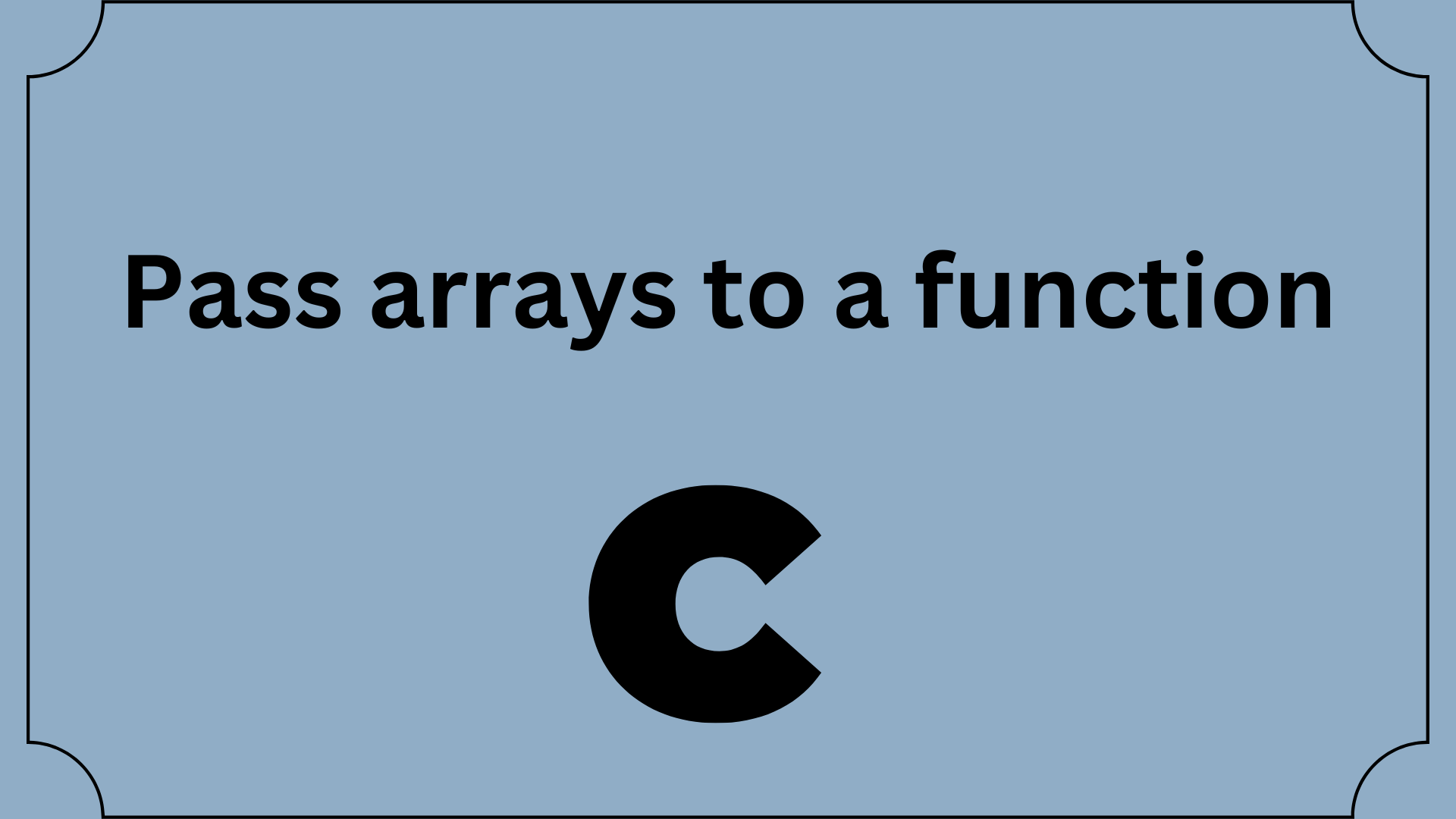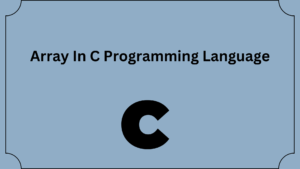With examples, you will learn in this tutorial about Pass arrays to a function in C —both one-dimensional and multidimensional—to a function in C.
You can supply a full array of functions in C programming. Let’s explore how you can pass certain array elements to functions before we understand that.
Contents
Pass Individual Array Elements(Pass arrays to a function in C)
The process of passing variables to a function is similar to the operation of passing array members.
Example 1: Pass Individual Array Elements(Pass arrays to a function in C)
#include <stdio.h>
void display(int age1, int age2) {
printf("%d\n", age1);
printf("%d\n", age2);
}
int main() {
int ageArray[] = {2, 8, 4, 12};
// pass second and third elements to display()
display(ageArray[1], ageArray[2]);
return 0;
}
Output
8
4
The display() function has been given an array of parameters in this case, just like we would provide a function as a variable.
// pass second and third elements to display() display(ageArray[1], ageArray[2]);
This is seen in the function specification, where the parameters are listed as separate variables:
void display(int age1, int age2) {
// code
}
Example 2: Pass Arrays to Functions(Pass arrays to a function in C)
// Program to calculate the sum of array elements by passing to a function
#include <stdio.h>
float calculateSum(float num[]);
int main() {
float result, num[] = {23.4, 55, 22.6, 3, 40.5, 18};
// num array is passed to calculateSum()
result = calculateSum(num);
printf("Result = %.2f", result);
return 0;
}
float calculateSum(float num[]) {
float sum = 0.0;
for (int i = 0; i < 6; ++i) {
sum += num[i];
}
return sum;
}
output
Result = 162.50
Only the array name is supplied as a parameter to pass a full array to a function.
result = calculateSum(num);
But take note of how [] is used in the function specification.
float calculateSum(float num[]) {
... ..
}
This tells the compiler that you are handing the function a one-dimensional array.
Pass Multidimensional Arrays to a Function
Only the array name is supplied to a function when passing multidimensional arrays to it (similar to one-dimensional arrays).
Example 3: Pass two-dimensional arrays
#include <stdio.h>
void displayNumbers(int num[2][2]);
int main() {
int num[2][2];
printf("Enter 4 numbers:\n");
for (int i = 0; i < 2; ++i) {
for (int j = 0; j < 2; ++j) {
scanf("%d", &num[i][j]);
}
}
// pass multi-dimensional array to a function
displayNumbers(num);
return 0;
}
void displayNumbers(int num[2][2]) {
printf("Displaying:\n");
for (int i = 0; i < 2; ++i) {
for (int j = 0; j < 2; ++j) {
printf("%d\n", num[i][j]);
}
}
}
output
Enter 4 numbers:
2
3
4
5
Displaying:
2
3
4
5
In both the function prototype and function definition, you’ll see the parameter int num[2][2]:
// function prototype void displayNumbers(int num[2][2]);
This denotes that a two-dimensional array is accepted as an argument by the function. As a function argument, we can also pass arrays with more than two dimensions.
The number of rows in an array need not be specified when sending a two-dimensional array. The number of columns should, however, always be stated.
For instance,
void displayNumbers(int num[][2]) {
// code
}
You may like:
JavaScript Variable Scope with Example



